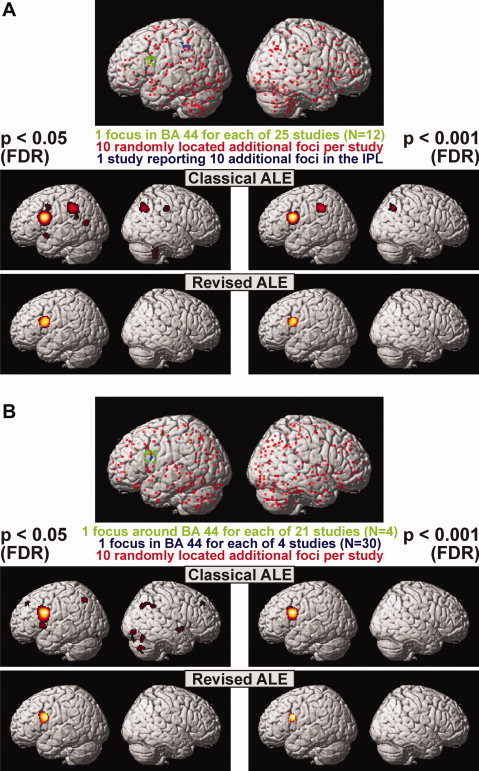Figure 8.

Results of the two simulated ALE analyses. The dataset examined in panel (A) consisted of 25 studies (12 subjects each) each featuring one focus in BA 44 and 10 randomly distributed additional foci. Moreover, a single study reported 10 foci in the inferior parietal lobule. Classical ALE analysis indicated significance for both regions (and locations of unintentional convergence between the random foci). In turn, the revised random‐effects approach revealed only the inferior frontal gyrus to have a true convergence between foci from different experiments. The dataset examined in panel (B) consisted of four studies investigating 30 subjects showing well localized foci in BA 44 and 21 studies investigating four subjects featuring more variable foci (each study also contained 10 randomly distributed foci). As hypothesized from the scaling of the FWHM by the sample size, the significant activation was more confined when the revised approach was used, confirming that the revised approach does indeed give higher localizing power to larger and hence more representative studies. As in the first dataset, classical ALE analysis but not the more conservative random‐effects approach also revealed spurious convergence between the random foci.
